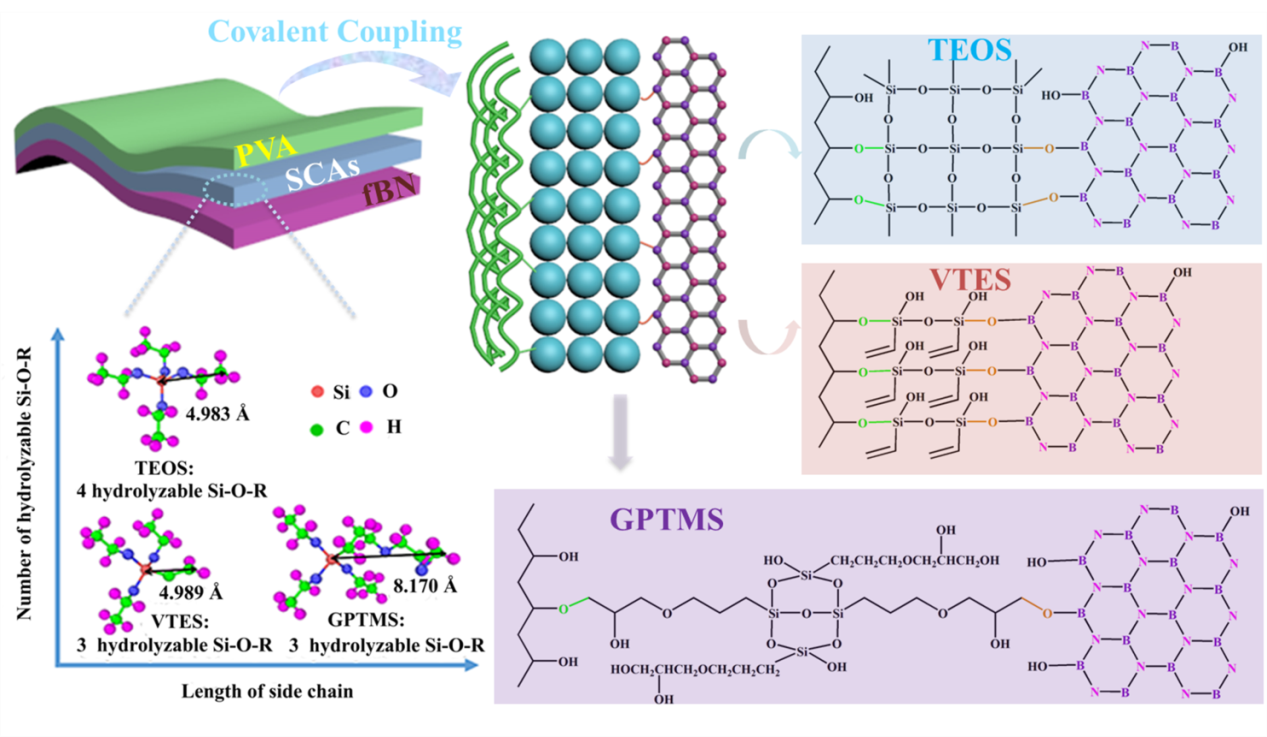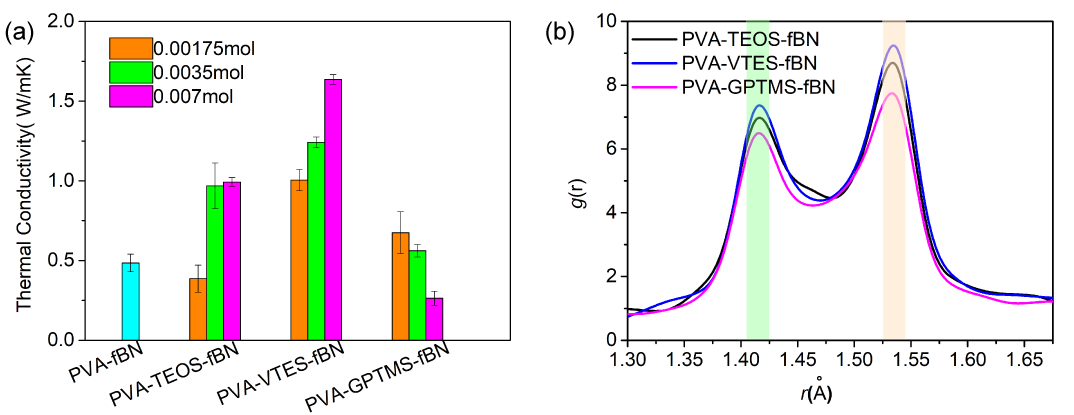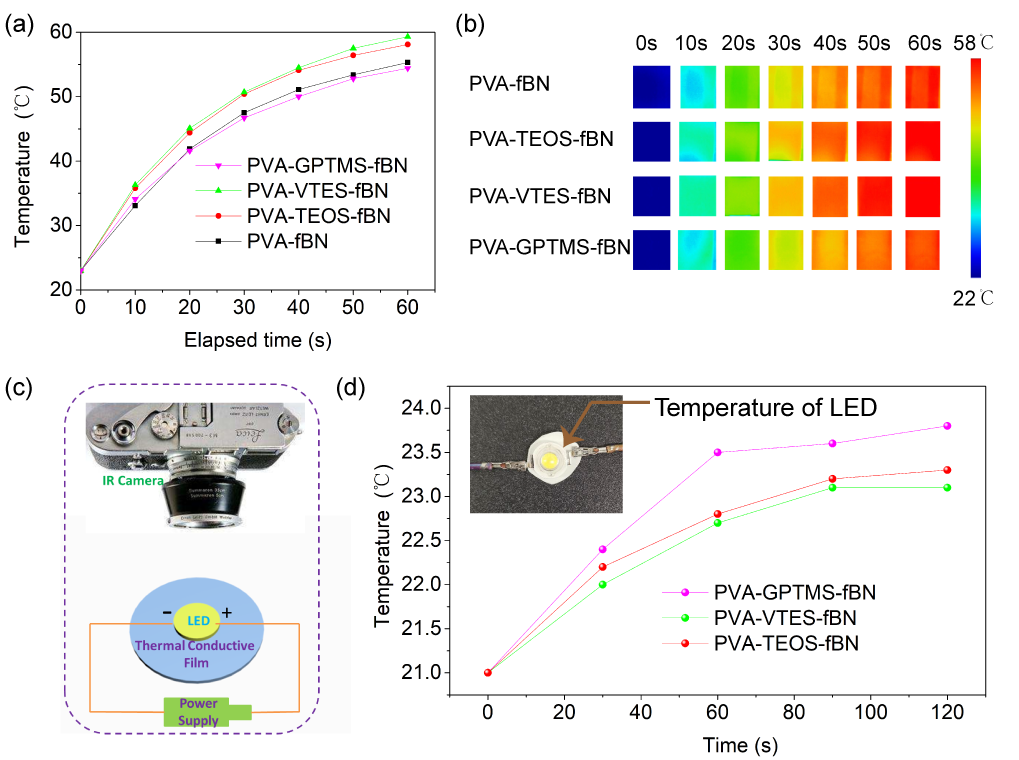
A research team from the Institute of Solid State Physics, Hefei Institutes of Physical Science has conducted a study on thermal conductivity of composites. They found that thermal conductivity (TC) of Poly(vinyl alcohol)/boron nitride composite film could be regulated on the molecular level by covalent coupling.
TC enhancement of polymer-based packaging composites is of great significance for thermal management of electronics. Interface between fillers and polymer matrix is the bottleneck of the heat transfer in the composite material.
Covalent bonding offers permanent attachments between fillers and polymers, effectively constraining the corresponding scattering of phonons, thus decreasing interfacial thermal resistance. However, the introduced molecules wrapped on the surrounding of fillers can possibly act as thermal barriers. Thus, clarifying the effect of silane coupling agents (SCAs) on the TC of the composite is of importance.
To tackle the problem, the team systematically investigated the effect of three kinds of SCAs on TC of poly(vinyl alcohol)/functionalized boron nitride (PVA/fBN).
The results showed that SCAs molecules with short side chain, i.e. Vinyl triethoxysilane and tetraethyl orthosilicate, increased the TC of composite polymer, with maximum value of 1.636 W/m·K, which was 337.3% of that of PVA/ fBN.
In contrast, 3-glycidoxypropyltrimethoxy silane with long side chain decreased the TC to 54.4% of that of PVA/ fBN.
Integrated with atomistic simulations, it can be concluded that the number of hydrolyzable Si-O-R of SCAs molecules affectes the TC of PVA-fBN composite through controlling the self-condensation degree of SCAs. The long side chain of SCAs enhances the disorder of the vicinal molecular structure, limiting the phonon transferring.
The revealed intrinsic relationship between TC of the composite and molecular structure of SCAs would provide a new perspective to understand the covalent bonding regulated TC of the polymer/filler system.
This study will guide thermal management material design on the molecular level, further supporting the development of advanced electronics.
This work was financially supported by the National Key Research and Development Program of China, the Science and Technology Service Network Program of the Chinese Academy of Sciences (CAS), the Youth Innovation Promotion Association of CAS, the Anhui Provincial Natural Science Foundation, the CASHIPS (Hefei Institutes of Physical Science, CAS) Director's Fund and The Research Council of Norway.

Fig. 1. Schematic of PVA/fBN with different SCAs coupling. (Image by CHENG Hua)

Fig. 2. (a) TC of the composites with different SCAs and various SCAs loadings, (b) radial distribution function (RDF) of the equilibrated PVA-SCAs-fBN system. (Image by CHENG Hua)

Fig. 3. (a) Temperature evolution with elapsed time and (b) infrared thermal images of the composites with 0.007mol SCAs loading, (c) configuration of LED temperature measurement and (d) working temperature evolution of the LED lamp with composite film substrate (shown in the inset) of 0.007 mol SCAs loading. (Image by CHENG Hua)

86-10-68597521 (day)
86-10-68597289 (night)

52 Sanlihe Rd., Xicheng District,
Beijing, China (100864)

